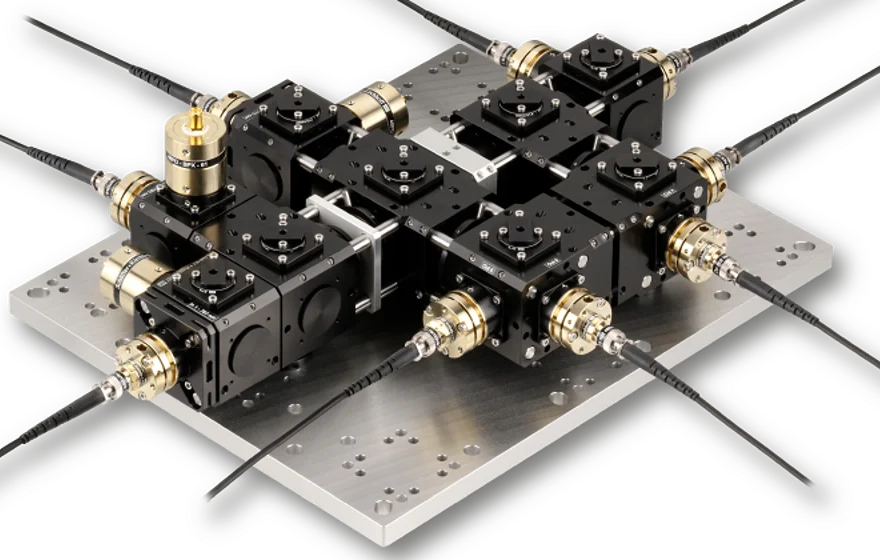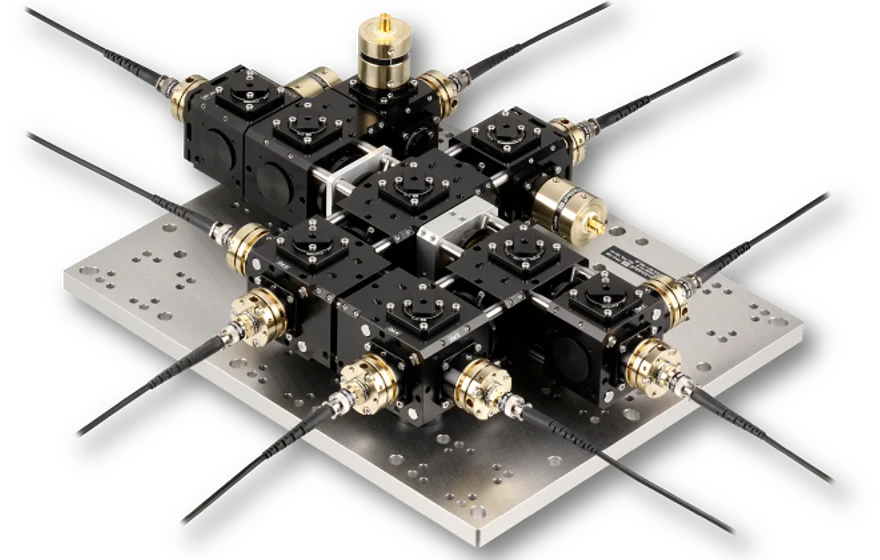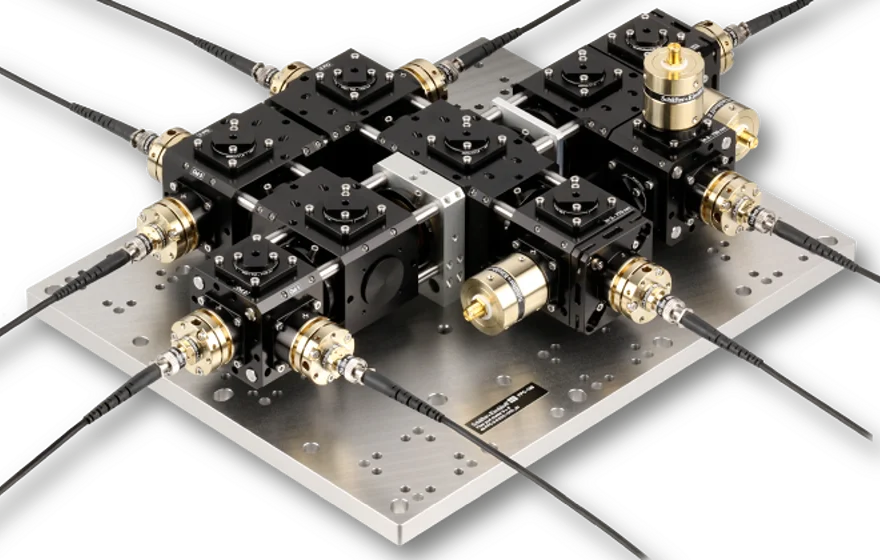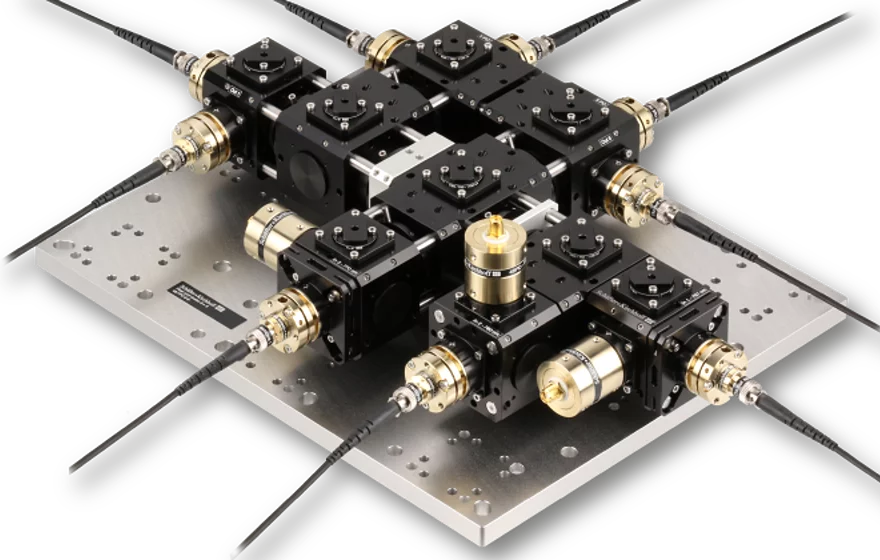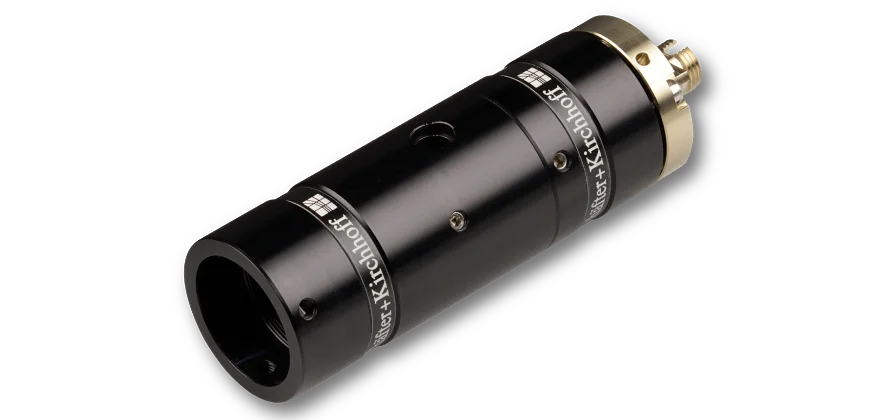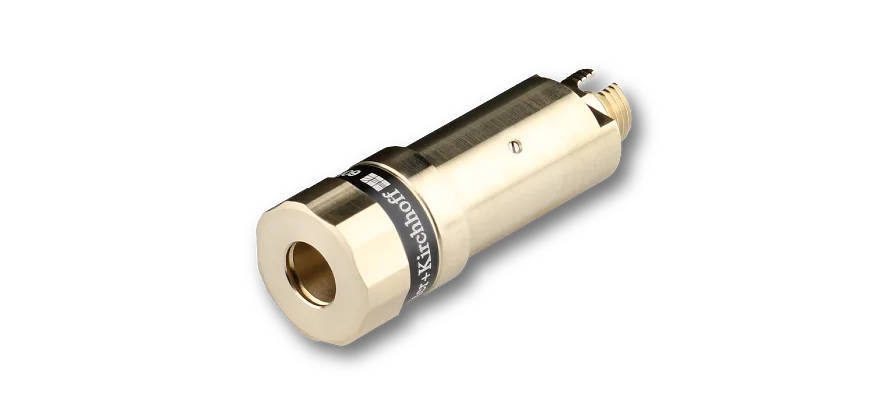Features
Fiber Port Cluster for two input sources with differing wavelength as well as one aditional auxiliary input port and with 6 output ports.- Configuration 2 ⇾ 6 dichroic
- Superposition by means of a polarization beam splitting cube and a dichroic wave plate
- Additional auxiliary input port
- Highly efficient coupling into polarization-maintaining fiber cables
- Adjustable splitting ratio
- Compact, rugged, transportable and sealed opto-mechanical units
- Fully fiber-coupled
- Very high long-term stability, efficiency and reproducability
